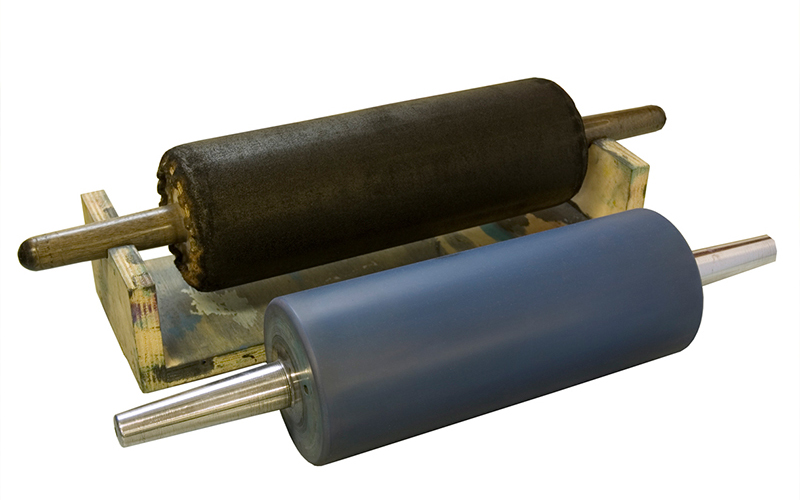Rollers
ローラー
Rollers
CATEGORIES
Printmaking rollers are used to apply oil-based ink to printmaking surfaces when using wooden blocks, or when using copperplates or lithographs for chromolithography.
There are two types of rollers: leather rollers and synthetic rubber rollers. Leather rollers have two types, those made of suede and those made of nubuck. Those made of suede are used in the making of printing surfaces; those made of nubuck and synthetic rubber are used in printing. Rubber rollers come in various hardnesses, with harder rollers used for lithographs and two different types (one soft, one hard) used with multicolored copperplate printing in order to take advantage of the impressions created during the printing process. In order for the rollers to spin smoothly when they are being used, tegawa (curled piece of leather) is covered on both side of the axle. In the case of rubber rollers, however, bare hands are sometimes used instead of tegawa.
Different types of rollers require different forms of care. New leather rollers cannot be used right away; first viscous varnish and linseed oil are mixed on the ink slab to adjust its viscosity, and then the roller is rolled on that surface to coat the leather with the varnish. The roller can be used once it has been treated in this way. Suede rollers can be stored by simply rolling them up in cellophane; from time to time, however, an ink spatula should be used to scrap off accumulations on the surface of the leather. Doing so removes old ink and other detritus from the surface of the roller. Ink must be completely removed from nubuck and rubber rollers using a solvent (mineral spirits for nubuck, print cleaner for rubber; paint thinner should not be used). If in the course of use the surface of a roller should harden and become glazed, ink will cease to adhere well; should this occur, one must have the roller resurfaced professionally.
Rollers can be purchased from stores specializing in rollers, or from art supply stores that handle printmaking supplies.


